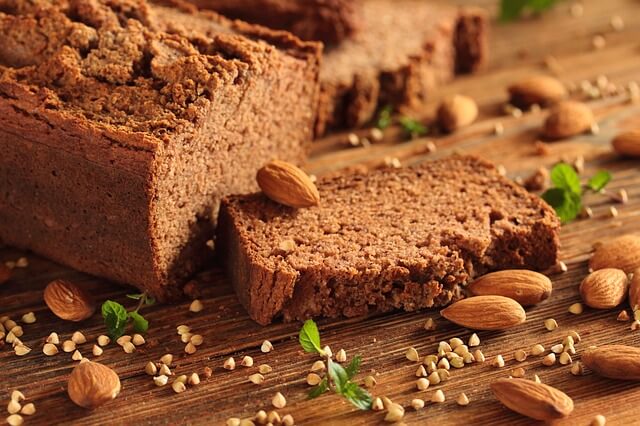Gluten-free diet: 5 things to eat

Gluten can be present in grains such as wheat, barley, rye, and triticale, a hybrid between wheat and rye. A gluten-free diet can help control symptoms of celiac disease and other gluten-related medical problems. This diet has also gained in appeal among those who do not have gluten-related medical issues. The stated benefits of the diet include better health, weight reduction, and increased energy.
Gluten-free diet effects:
The effects of eliminating gluten from your diet will most likely affect your total intake of fiber, vitamins, and other minerals . Therefore, whatever your reasons for sticking to a gluten-free diet , it’s essential to understand how this might influence your total nutritional needs:
- Celiac disease is an autoimmune disease in which gluten activates the immune system, causing damage to the lining of the small intestine. This damage, over time, prevents nutrients from being absorbed through meals.
- Even though there is no damage to the tissues of the small intestine, sensitivity to gluten causes some of the same signs and symptoms as celiac disease, such as upset stomach, bloating, diarrhea, constipation, hazy thoughts, rash or headache. The immune system appears to have a role, according to research, although the mechanism is not fully understood.
- Gluten ataxia is an autoimmune disease that affects certain nervous tissues, causing difficulty in muscle coordination and voluntary muscle movement.
- Wheat allergy , like other food allergies, occurs when the immune system mistakenly identifies gluten or another protein in wheat as a pathogen, such as a virus or bacteria. The immune system makes an antibody to the protein, triggering an immune response that can cause congestion, breathing problems, and many other symptoms.
Gluten-free food:

If you’re following a gluten-free diet , then fortunately you will find that there are several foods that do not contain gluten and here are a few:
1- Gluten Free Fruits and Seeds:
There are several fruits and seeds without Gluten that we can add to our muesli, yogurt, salads or our daily smoothies as a garnish, and this like:
- Goji Berry
- Bay of Cassis
- White mulberry berries
- Cranberries
- Sweet cherries
- Superfruit cocktails
- Cocoa beans
- Dried strawberries
- Hemp seeds
- Chia seeds
- White Mulberries
- Black mulberries
- Blueberries
- Red bean
- Black bean
- Oatmeal
2- Gluten Free Biscuits and Pastry:
Gluten-free cookies (but not without joy) are multiplying as quickly as they attract us. Their main objective is to allow people with gluten intolerance to enjoy cookies and pastry in the same way as everyone else, for example:
- Shortbread cookies with seeds
- Pastry mix
- Coconut shortbread,
- Chocolate cake preparation,
- Lemon shortbread,
- Organic Lemon & Chia Grains shortbread,
- Super Fig Almond Amaranth Bars,
- Super sesame Cranberries bars
3- Gluten Free Flour:

It takes a lot of skill to make gluten-free bread. However, with the right products (described below) and a few proven tips, it’s a snap!
- Flour with yeast,
- Whole corn flour,
- Rice flour,
- Buckwheat flour,
- Guar gum,
- Mix of millet bread and garines,
- Buckwheat bread mix
4- Gluten Free Superfoods:
Super foods are nutritionally dense plant powders. Super foods promote your healthy lifestyle by adding vitamins, minerals and proteins to your daily life (muesli, yogurt, salads, smoothies …) here is a list of superfoods to know absolutely:
- Acai berry powder,
- Lucuma Cocoa Maca powder blend,
- Bee pollen,
- Pollen in granules,
- Barley grass powder,
- Wheatgrass powder,
- Goji berry powder,
- Banana powder,
- Baobab powder,
- Red beet powder,
- Cocoa powder,
- Camu camu powder,
- Chlorella powder ,,
- Turmeric powder,
- Guarana powder,
- Lucuma powder,
- Maca powder,
- Moringa powder,
- Hemp protein powder,
- Spirulina powder,
- Agave sugar powder,
- Powder Mix Total Detox,
- Breakfast Mix Powder,
- Powder mix Rich in fiber,
- Sports Mix Powder,
- Powder Mix Vitality,
- Choco smoothie
- Hemp plant protein powder,
- Chia vegetable protein powder,
- Pea, rice, sunflower, pumpkin and hemp protein powder,
- Pumpkin seed protein powder,
- Soy vegetable protein powder,
- Protein Powder Mixture of pumpkin, sunflower and hemp,
- Whey powder,
- Whey powder lactose free
- Eleutherococcus
5- Gluten Free Pasta:
Gluten-free pasta, like pasta made from wheat, belongs to the group of grains, breads and starches due to their high starch content. Gluten is a set of proteins found in wheat, as well as other grains such as rye, oats and barley, which can cause digestive problems and nutritional malabsorption (proteins, iron, vitamins and minerals.). T his type of protein. Rice and corn flour (sometimes quinoa) are mixed to create a color and texture that resembles wheat pasta.
Here are some examples of it:
- Fusilli red lentils,
- Fusilli green peas,
- Fusilli Sarasin,
- Yellow lentil lasagna,
- But twist,
- Spaghetti Corn and Rice,
- Rice leaves
5- Other Gluten Free Foods:
There are also many other gluten-free foods that can be used as a healthier alternative such as:
- Organic Lollipop Pops
- Coconut milk
- Organic tangy teddy bear
- Spread
- Cocoa nuggets
- Coconut blossom sugar,
And you, What are the gluten-free products that you usually buy?
To Read: 2 digestion processes to learn abouv
